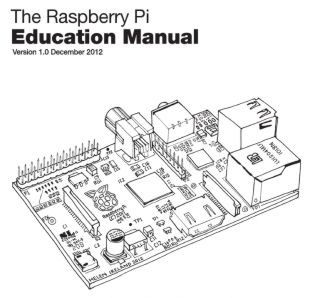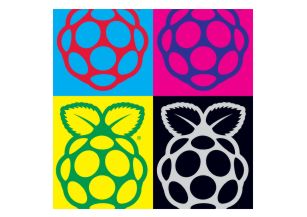| Raspberry Pi Educational Manual Released |
| Written by Harry Fairhead | |||
| Saturday, 05 January 2013 | |||
|
A free for non-commercial use teaching manual written by a team of UK teachers from Computing at School (CAS) is now available for download at the Pi store. The manual, which has been prepared with support from the Raspberry Pi Foundation is released under a Creative Commons 3.0 license and is therefore free for you to download, copy, adapt and use - as long as you don't try to resell it.
In the initial version there are chapters on Scratch, Python, interfacing, and the command line. There isn't an introductory section on setting up your Pi and it is assumed you know how to switch it on and load a program. There are already lots of getting started guides that will sort out any hardware problems you might have. The introduction to Scratch is very simple with worksheets that explain the what you are about to learn and then take you though the exercise. They are best described as clear but slightly uninspiring in format - but this is probably what is required at this level. The introduction to Python uses the command prompt for immediate execution of simple programs that make use of Pygame eventually graduating to the use of IDLE. Compared to the Scratch tutorial the style is more relaxed and much more suitable for personal study. If you want to get started with using Pi for hardware interfacing then the section of Human-computer interfacing is a good place to start. This starts off with a look at network programming - Twitter and remote procedure calls but then moves on to using the GPIO for general interfacing. It gets as far as how to flash and LED and read a switch before moving on to consider how to interface to an Arduino. The final section attempts to give the user a potted guide to the Linux command line. This gets surprisingly advanced very quickly including how to setup an X server so that you can work remotely via a GUI. A group at Oracle is currently working on a faster Java virtual machine (JVM) for the Pi, and once that is complete, chapters on Greenfoot and Geogebra will also be made available.
Overall a nice introduction to using the Pi and it mostly manages to keep to the spirit of the project - a useful resource. More InformationRelated ArticlesRaspberry Pi Gets An App Store A Bare Metal Raspberry Pi Course MagPi - A Raspberry Pi Magazine Reaches Issue 3
To be informed about new articles on I Programmer, install the I Programmer Toolbar, subscribe to the RSS feed, follow us on, Twitter, Facebook, Google+ or Linkedin, or sign up for our weekly newsletter.
Comments
or email your comment to: comments@i-programmer.info
|
|||
| Last Updated ( Saturday, 05 January 2013 ) |



